


Hello everyone!
I am Silverman43, jungle main from EUW and guide writer on Mobafire since 2017. Welcome to my
 Taliyah
Taliyah guide! After the changes to her kit during season 8, she became viable in the jungle, so I picked her up and eventually fell in love with this unique champion. In this guide I'll be teaching how to play
 Taliyah
Taliyah, not only for in the jungle, but in all 5 roles! Next to the champion-specific info, you can also find a lot of info about general game concepts that are useful for whatever champion you play. Let's get into it!

Some abbreviations I use in this guide:
-AD=Attack Damage
-AP=Ability Power
-AS=Attack Speed
-MR=Magic Resist
-MS=Movement Speed
-HP=Health Points
-AoE=Area of Effect
-AA=Auto Attack
-CC=Crowd Control (Stuns, roots, slows, fears...)
-AH=Ability Haste
-OOM=Out Of Mana


 Flash
Flash
| |
|
The best offensive and the best defensive spell in one. It's a get out of jail spell, or an extra gap closer when you need to chase a low-health target.  Flash is mandatory on almost every champion and Flash is mandatory on almost every champion and  Taliyah is no exception, no matter which role you play. Taliyah is no exception, no matter which role you play. | |
 Smite
Smite
| |
|
Always take this when jungling. You need it to be able to buy jungle items and you can cast it on monsters to deal some true damage (depending on level) and restore some health. After casting  Smite 5 times with Smite 5 times with  Hailblade or Hailblade or  Emberknife transforms the spell into Emberknife transforms the spell into  Chilling Smite or Chilling Smite or  Challenging Smite. Then you can also cast Challenging Smite. Then you can also cast  Smite on enemy champions, stealing MS or dealing extra true damage to them while reducing their damage to you respectively. Smite on enemy champions, stealing MS or dealing extra true damage to them while reducing their damage to you respectively. | |
 Ignite
Ignite
| |
|
 Ignite is a good choice on Ignite is a good choice on  Taliyah. The free true damage further helps you exploit Taliyah. The free true damage further helps you exploit  Taliyah's good early game. For midlane Taliyah's good early game. For midlane  Taliyah it's the most common summoner spell together with Taliyah it's the most common summoner spell together with  Flash. It's also a good choice when you play as support with a strong early ADC, like Flash. It's also a good choice when you play as support with a strong early ADC, like  Lucian or Lucian or  Draven. Draven.  Ignite also inflicts grievous wounds, what means it's a great choice against (self-)healers like Ignite also inflicts grievous wounds, what means it's a great choice against (self-)healers like  Swain, Swain,  Vladimir or Vladimir or  Soraka, as grievous wounds reduce healing effects. Soraka, as grievous wounds reduce healing effects. | |
 Heal
Heal
| |
|
The fact that this spell heals both you and an ally makes it the perfect choice for botlane (APC)  Taliyah. It can also be picked midlane for a little advantage during roams and ganks and while skirmishing together with your jungler. Taliyah. It can also be picked midlane for a little advantage during roams and ganks and while skirmishing together with your jungler.  Heal also gives a small MS boost, which can help to hit Heal also gives a small MS boost, which can help to hit  Threaded Volley. Threaded Volley. | |
 Teleport
Teleport
| |
|
When playing toplane, this will often be your 2nd summonerspell besides  Flash. Use it to get back to your lane fast, as toplane is longer than midlane and having to back at a bad timing can mean the loss of a lot of exp and gold. You can also use Flash. Use it to get back to your lane fast, as toplane is longer than midlane and having to back at a bad timing can mean the loss of a lot of exp and gold. You can also use  Teleport to gank bot, which is very strong with Teleport to gank bot, which is very strong with  Taliyah's Taliyah's  Seismic Shove and Seismic Shove and  Weaver's Wall. Weaver's Wall. | |
 Barrier
Barrier
| |
|
 Barrier is kinda the more selfish equivalent of Barrier is kinda the more selfish equivalent of  Heal. It is most often used in harder midlane matchups, where the enemy laner has the power to burst you down. Casting Heal. It is most often used in harder midlane matchups, where the enemy laner has the power to burst you down. Casting  Barrier grants you a shield in order to increase your chances of survival. Barrier grants you a shield in order to increase your chances of survival. | |
 Cleanse
Cleanse
| |
|
This is a niche summoner spell for midlane or sometimes botlane. It enables you to break free from the effects of CC (except for supression and airborn), which can sometimes mean the difference between life or death. It's super useful against  Zoe's Zoe's  Sleepy Trouble Bubble or Sleepy Trouble Bubble or  Lissandra's Lissandra's  Frozen Tomb. It's also worth considering when the enemy jungler has a lot of hard CC, think of Frozen Tomb. It's also worth considering when the enemy jungler has a lot of hard CC, think of  Sejuani. Sejuani. | |
 Exhaust
Exhaust
| |
|
Target an enemy champion to slow them and reduce their damage for 2.5s.  Exhaust might be a good idea if you're playing midlane against an AD opponent with high burst like a Exhaust might be a good idea if you're playing midlane against an AD opponent with high burst like a  Zed. It should also be taken as a support in certain cases. This might be when the enemy botlane has high kill pressure, like a Zed. It should also be taken as a support in certain cases. This might be when the enemy botlane has high kill pressure, like a  Lucian - Lucian -  Alistar botlane who are strong early and are able to go all-in pre-6. Alistar botlane who are strong early and are able to go all-in pre-6. | |

 Taliyah
Taliyah is a burst-mage without consistent CC. That's why
 Domination
Domination is her most common primary rune path. It allows you to increase your burst even further and it offers all-round good options for
 Taliyah
Taliyah.


|
|
Damaging enemy champions below half HP with  Dark Harvest deals bonus damage and harvests a soul. Then the keystone goes on cooldown. The bonus damage scales with AP/AD and the amount of souls you have harvested, so it scales infinitely. When you gain a takedown, Dark Harvest deals bonus damage and harvests a soul. Then the keystone goes on cooldown. The bonus damage scales with AP/AD and the amount of souls you have harvested, so it scales infinitely. When you gain a takedown,  Dark Harvest's cooldown also resets, meaning that you can use it multiple times in teamfights. In my opinion, it is the most reliable keystone on Dark Harvest's cooldown also resets, meaning that you can use it multiple times in teamfights. In my opinion, it is the most reliable keystone on  Taliyah. It can be activated just by doing damage, so with any spell or an AA. It also scales great and helps with Taliyah. It can be activated just by doing damage, so with any spell or an AA. It also scales great and helps with  Taliyah's lesser late game, but it has the disadvantage that it's weaker early and requires you to be aggressive to gain souls. Taliyah's lesser late game, but it has the disadvantage that it's weaker early and requires you to be aggressive to gain souls.
|


|
|
 Electrocute is the less risky alternative to Electrocute is the less risky alternative to  Dark Harvest. It's a lot stronger early than Dark Harvest. It's a lot stronger early than  Dark Harvest, but it falls off late game. You can only use it once or twice during a teamfight so you should be careful not to waste it on their tanky frontline. Instead of just dealing damage once, to proc Dark Harvest, but it falls off late game. You can only use it once or twice during a teamfight so you should be careful not to waste it on their tanky frontline. Instead of just dealing damage once, to proc  Electrocute you have to damage a target with 3 different damage sources. But luckily, this isn't too hard on Electrocute you have to damage a target with 3 different damage sources. But luckily, this isn't too hard on  Taliyah. A rotation of all your basic abilities activates it already. Taliyah. A rotation of all your basic abilities activates it already.
|


|
|
After impairing the movement of an enemy champion, the next damage you deal to them will contain some bonus true damage thanks to  Cheap Shot. It's decent on Cheap Shot. It's decent on  Taliyah who can activate it with Taliyah who can activate it with  Seismic Shove's knock up and Seismic Shove's knock up and  Unraveled Earth's slow. If you build Unraveled Earth's slow. If you build  Rylai's Crystal Scepter, it will be even easier to activate it. Take this if you want extra burst damage. Rylai's Crystal Scepter, it will be even easier to activate it. Take this if you want extra burst damage.
|

|
|
 Taste of Blood is simple but useful. You'll heal a bit when you damage an enemy champion every 20 seconds. Take this when you want to play a little more defensive in lane. It pairs nicely with Taste of Blood is simple but useful. You'll heal a bit when you damage an enemy champion every 20 seconds. Take this when you want to play a little more defensive in lane. It pairs nicely with  Threaded Volley poke and add some highly valuable sustain to Threaded Volley poke and add some highly valuable sustain to  Taliyah. Taliyah.
|


|
|
A nice rune for some extra AP. Champion kills, assists and ward takedowns grant permanent AP (or AD) up to 20 AP. Upon Completion, you get another 10 AP.  Zombie Ward or Zombie Ward or  Ghost Poro are solid options as well, but Ghost Poro are solid options as well, but  Eyeball Collection is often the easiest of the 3 to fully stack. Eyeball Collection is often the easiest of the 3 to fully stack.
|


|
|
Unique takedowns grant omnivamp, up to 7.5%, which means you'll heal for a percentage of the damage you deal. This is really nice on  Taliyah, who has no form of sustain in her kit. Just clear minions/monsters and you can heal quite a lot when it's fully stacked. Whether you play her in lane or in the jungle, this rune is always worth to pick. Taliyah, who has no form of sustain in her kit. Just clear minions/monsters and you can heal quite a lot when it's fully stacked. Whether you play her in lane or in the jungle, this rune is always worth to pick.
|

 Taliyah
Taliyah is squishy champion without defensive tools or escape mechanisms. Her CC also isn't always reliable. Getting ganked can often result in death. That's where
 Sorcery
Sorcery comes in handy.


|
|
For those who don't like the purely offensive  Domination keystones, there is Domination keystones, there is  Phase Rush. Hitting an enemy champion with 3 separate abilities or attacks grants extra MS and slow resistance for a few seconds. This can be used both offensively and defensively. It can help to fully hit Phase Rush. Hitting an enemy champion with 3 separate abilities or attacks grants extra MS and slow resistance for a few seconds. This can be used both offensively and defensively. It can help to fully hit  Threaded Volley and it can help you get out of danger. It gives some protection against ganks, which can be really welcome as Threaded Volley and it can help you get out of danger. It gives some protection against ganks, which can be really welcome as  Taliyah's kit lacks defensive tools. Taliyah's kit lacks defensive tools.
|


|
|
Of the 3 choices in this row,  Manaflow Band is easily the most useful one for lane Manaflow Band is easily the most useful one for lane  Taliyah. Hitting an enemy champion every once in while permanently grants bonus mana. This goes up to 250 and from then on it restores some of your mana every few seconds. Perfect to counter Taliyah. Hitting an enemy champion every once in while permanently grants bonus mana. This goes up to 250 and from then on it restores some of your mana every few seconds. Perfect to counter  Taliyah's high mana costs. Taliyah's high mana costs.
|

|
|
Casting summoner spells grants bonus movement speed. Can come in really handy both offensively or defensively, especially as a jungler. It synergizes greatly with  Chilling Smite for example. Chilling Smite for example.
|


|
|
 Transcendence gives Transcendence gives  Taliyah 5 Ability Haste at level 5 and again at level 8. Additionally, once you reach level 11, getting takedowns reduces the remaining cooldown of your basic abilities. Taliyah 5 Ability Haste at level 5 and again at level 8. Additionally, once you reach level 11, getting takedowns reduces the remaining cooldown of your basic abilities.  Taliyah doesn't necessarily need the AH, but being able to cast spells more often is always welcome. And being able to use your combo again sooner after getting a kill can mean a difference during teamfights. Taliyah doesn't necessarily need the AH, but being able to cast spells more often is always welcome. And being able to use your combo again sooner after getting a kill can mean a difference during teamfights.
|

|
|
A simple, but decent rune.  Absolute Focus grants Absolute Focus grants  Taliyah AP (scaling with level) while she is above 70% HP. Take it for even more burst damage, especially useful on jungle Taliyah AP (scaling with level) while she is above 70% HP. Take it for even more burst damage, especially useful on jungle  Taliyah. Taliyah.
|


|
|
I absolutely love this rune. It gives you extra AP, with the amount scaling immensely over the course of the game. It can help you to play out a lead further, but it can also form the base of a comeback when playing from behind. It's especially good on  Taliyah to help her with her weaker late game. Taliyah to help her with her weaker late game.
|

|
|
As an alternative to  Gathering Storm for jungle Gathering Storm for jungle  Taliyah (or for anyone who fully wants to commit to roaming), there is Taliyah (or for anyone who fully wants to commit to roaming), there is  Waterwalking for those who prefer some more power early on. While in the river, you'll gain extra MS and AP. This means you'll roam faster through the river and taking objectives will be easier. Waterwalking for those who prefer some more power early on. While in the river, you'll gain extra MS and AP. This means you'll roam faster through the river and taking objectives will be easier.
|

 Precision
Precision offers some advantages in combat. It has some runes that complement
 Taliyah
Taliyah really well. The best thing of it is that these
 Precision
Precision runes stay relevant through the whole course of the game. It's one of the best secondary paths on
 Taliyah
Taliyah and you can't really go wrong with picking this.


|
|
When you damage enemy champions, your mana regeneration is temporarily increased. Additionally, takedowns restore 15% of your maximum mana. As  Taliyah can quickly run out of mana, this is super useful. You'll never run out of mana during a teamfight thanks to Taliyah can quickly run out of mana, this is super useful. You'll never run out of mana during a teamfight thanks to  Presence of Mind! Presence of Mind!
|


|
|
Ah, good ol' reliable  Coup de Grace. You deal 8% more damage to enemies under 40% of their HP. Noting complex, but useful. Perfect to make your burst hit even harder. Coup de Grace. You deal 8% more damage to enemies under 40% of their HP. Noting complex, but useful. Perfect to make your burst hit even harder.
|

 Taliyah
Taliyah doesn't have the best late game. That's where
 Sorcery
Sorcery comes in handy. This rune tree improves you during the later stages of the game. It can also help you to turn the tide in a losing game. Additionally, there are also some
 Sorcery
Sorcery runes that help jungle
 Taliyah
Taliyah with early game action.


|
|
 Transcendence gives Transcendence gives  Taliyah 5 Ability Haste at level 5 and again at level 8. Additionally, once you reach level 11, getting takedowns reduces the remaining cooldown of your basic abilities. Taliyah 5 Ability Haste at level 5 and again at level 8. Additionally, once you reach level 11, getting takedowns reduces the remaining cooldown of your basic abilities.  Taliyah doesn't necessarily need the AH, but being able to cast spells more often is always welcome. And being able to use your combo again sooner after getting a kill can mean a difference during teamfights. Taliyah doesn't necessarily need the AH, but being able to cast spells more often is always welcome. And being able to use your combo again sooner after getting a kill can mean a difference during teamfights.
|

|
|
A simple, but decent rune.  Absolute Focus grants Absolute Focus grants  Taliyah AP (scaling with level) while she is above 70% HP. Take it for even more burst damage. The extra AP early on is also really useful for jungle Taliyah AP (scaling with level) while she is above 70% HP. Take it for even more burst damage. The extra AP early on is also really useful for jungle  Taliyah's first clear. This is one of the main reasons why I slightly prefer Taliyah's first clear. This is one of the main reasons why I slightly prefer  Sorcery over Sorcery over  Precision secondary for jungle Precision secondary for jungle  Taliyah. Taliyah.
|

|
|
Casting summoner spells grants bonus movement speed. Can come in really handy both offensively or defensively, especially as a jungler. It synergizes greatly with  Chilling Smite for example. Chilling Smite for example.
|


|
|
I absolutely love this rune. It gives you extra AP, with the amount scaling immensely over the course of the game. It can help you to play out a lead further, but it can also form the base of a comeback when playing from behind. It's especially good on  Taliyah to help her with her weaker late game. Taliyah to help her with her weaker late game.
|

|
|
As an alternative to  Gathering Storm for jungle Gathering Storm for jungle  Taliyah (or for anyone who fully wants to commit to roaming), there is Taliyah (or for anyone who fully wants to commit to roaming), there is  Waterwalking for those who prefer some more power early on. While in the river, you'll gain extra MS and AP. This means you'll roam faster through the river and taking objectives will be easier. Waterwalking for those who prefer some more power early on. While in the river, you'll gain extra MS and AP. This means you'll roam faster through the river and taking objectives will be easier.
|

 Inspiration
Inspiration secondary is really useful for a defensive setup. It's at its best when you're laning in a hard matchup. There are more viable
 Inspiration
Inspiration runes on
 Taliyah
Taliyah than the 2 I cover here, but the others are more situational. This is setup is the most common and often the most reliable.


|
|
Every 2 minutes you'll get a free  Total Biscuit of Everlasting Will that restores 10% of your missing HP and mana, up to an amount of 3. Consuming or selling a biscuit also permanently increases your mana by 50. A good choice, especially in a heavy poke lane to sustain you through laning phase. Total Biscuit of Everlasting Will that restores 10% of your missing HP and mana, up to an amount of 3. Consuming or selling a biscuit also permanently increases your mana by 50. A good choice, especially in a heavy poke lane to sustain you through laning phase.
|

|
|
After 14 minutes you'll gain a  Stopwatch. Each takedown speed this up with 2 minutes. Like a normal Stopwatch. Each takedown speed this up with 2 minutes. Like a normal  Stopwatch, the item has a one time use active that puts you into stasis. It can be a life saver against assassins, especially for a squishy mage like Stopwatch, the item has a one time use active that puts you into stasis. It can be a life saver against assassins, especially for a squishy mage like  Taliyah. Taliyah.
|


|
|
Potions or a  Total Biscuit of Everlasting Will grant half of its HP and mana immediately, but you can't consume them again until the effect wears off. Additionally, while under the effect of a potion or biscuit, you'll gain 5% bonus MS. To fully benefit from this rune, you should take it in combination with Total Biscuit of Everlasting Will grant half of its HP and mana immediately, but you can't consume them again until the effect wears off. Additionally, while under the effect of a potion or biscuit, you'll gain 5% bonus MS. To fully benefit from this rune, you should take it in combination with  Biscuit Delivery and start with Biscuit Delivery and start with  Corrupting Potion. Then you got a lot of sustain to survive laning phase. Corrupting Potion. Then you got a lot of sustain to survive laning phase.
|

If you went with
 Sorcery
Sorcery or
 Inspiration
Inspiration as your primary path,
 Domination
Domination is still a great choice as secondary path with many runes that complement
 Taliyah
Taliyah well.


|
|
 Taste of Blood is simple but useful. You'll heal a bit when you damage an enemy champion every 20 seconds. Take this when you want to play a little more defensive in lane. It pairs nicely with Taste of Blood is simple but useful. You'll heal a bit when you damage an enemy champion every 20 seconds. Take this when you want to play a little more defensive in lane. It pairs nicely with  Threaded Volley poke and add some highly valuable sustain to Threaded Volley poke and add some highly valuable sustain to  Taliyah. Taliyah.
|

|
|
After impairing the movement of an enemy champion, the next damage you deal to them will contain some bonus true damage thanks to  Cheap Shot. It's decent on Cheap Shot. It's decent on  Taliyah who can activate it with Taliyah who can activate it with  Seismic Shove's knock up and Seismic Shove's knock up and  Unraveled Earth's slow. If you build Unraveled Earth's slow. If you build  Rylai's Crystal Scepter, it will be even easier to activate it. Take this if you want extra burst damage. Rylai's Crystal Scepter, it will be even easier to activate it. Take this if you want extra burst damage.
|


|
|
Unique takedowns grant omnivamp, up to 7.5%, which means you'll heal for a percentage of the damage you deal. This is really nice on  Taliyah, who has no form of sustain in her kit. Just clear minions/monsters and you can heal quite a lot when it's fully stacked. Whether you play her in lane or in the jungle, this rune is always worth to pick. Taliyah, who has no form of sustain in her kit. Just clear minions/monsters and you can heal quite a lot when it's fully stacked. Whether you play her in lane or in the jungle, this rune is always worth to pick.
|

 |
|
Jungle  Taliyah is usually restricted to Taliyah is usually restricted to  Domination and Domination and  Sorcery. (Not saying that other setups can't work, these are just the most common ones.) The most reliable path is Sorcery. (Not saying that other setups can't work, these are just the most common ones.) The most reliable path is  Domination primar, with either Domination primar, with either  Dark Harvest for weaker early, but hard scaling burst damage or Dark Harvest for weaker early, but hard scaling burst damage or  Electrocute for more reliable, but weaker late burst damage. Electrocute for more reliable, but weaker late burst damage.  Sorcery secondary can either give you better ganks and river control, or it enhances your burst and scaling. Sorcery secondary can either give you better ganks and river control, or it enhances your burst and scaling.
|
|
|
While playing  Taliyah midlane, toplane or botlane (APC), there are quite some different rune setups to choose from. You can take domination primary, with either Taliyah midlane, toplane or botlane (APC), there are quite some different rune setups to choose from. You can take domination primary, with either  Dark Harvest for weaker early, but hard scaling burst damage or Dark Harvest for weaker early, but hard scaling burst damage or  Electrocute for more reliable, but weaker late burst damage. As secondary path there is Electrocute for more reliable, but weaker late burst damage. As secondary path there is  Precision for an exta advantage in combat, Precision for an exta advantage in combat,  Sorcery to scale better into late game or Sorcery to scale better into late game or  Inspiration to provide a safer laning phase. You can also opt for Inspiration to provide a safer laning phase. You can also opt for  Sorcery with Sorcery with  Phase Rush as primary path if you prefer something safer (against ganks). Then you can again choose between Phase Rush as primary path if you prefer something safer (against ganks). Then you can again choose between  Precision for an exta advantage in combat and Precision for an exta advantage in combat and  Inspiration to provide a safer laning phase, but also Inspiration to provide a safer laning phase, but also  Domination for a mix between damage and sustain or completely sustain. Domination for a mix between damage and sustain or completely sustain. |
|

|
 |
|
As support  Taliyah you can once again opt for Taliyah you can once again opt for  Domination primary with Domination primary with  Dark Harvest for weaker early, but hard scaling burst damage or Dark Harvest for weaker early, but hard scaling burst damage or  Electrocute for more reliable, but weaker late burst damage. As secondary path there is Electrocute for more reliable, but weaker late burst damage. As secondary path there is  Precision for an exta advantage in combat or Precision for an exta advantage in combat or  Sorcery to scale better into late game. Sorcery to scale better into late game.
|

 |
|
From the first row, you'll want to take the AP in almost all cases. The Ability Haste isn't really worth it. The AS can be taken when going jungle, as it really helps with kiting and clearing camps early on.
From the second row, the AP is probably the only choice you want to consider. As a mage, you'll want to maximize your damage.
For the last row, you can take the MR or armor according to your lane opponent. However, against balanced teams with mixed damage the extra HP can often be more useful in the long run.
|

|
|
|

 Taliyah gains up to 20% − 45% (based on level) bonus movement speed, which builds up over 1 second if she had been near terrain or structures for at least 0.4 seconds and decays by the same amount if out of range for at least 0.8 seconds. Taliyah gains up to 20% − 45% (based on level) bonus movement speed, which builds up over 1 second if she had been near terrain or structures for at least 0.4 seconds and decays by the same amount if out of range for at least 0.8 seconds.
Entering combat or casting an ability puts Rock Surfing on a 2 second cooldown that is continuously refreshed while remaining in combat.
|
 Rock Surfing
Rock Surfing is one of the defining aspects of
 Taliyah
Taliyah. It's nothing game-changing, but it does enhance her roams a lot. You don't have to worry too much about it, but being conscious about what path you are using to roam can save you some valuable seconds.
Tips
- While walking to lane, hug the walls. Don't walk straight through the middle of the lane, but walk to the sides.
 Rock Surfing will make sure you'll get there faster, so you'll lose out on less gold and exp by recalling.
Rock Surfing will make sure you'll get there faster, so you'll lose out on less gold and exp by recalling.
- The same thing counts for roams and ganks. Always hug the walls while moving. In the river for example, you can
walk surf the whole distance from mid to top/bot with  Rock Surfing active.
Rock Surfing active.

|
|
|

 Taliyah unleashes 5 stone shards in quick succession in the target direction over 1.5 seconds, dealing 70 / 95 / 120 / 145 / 170 (+45% of ability power) magic damage to the first target hit. Enemies hit by multiple stone shards take 50% damage beyond the first. Monsters take 80% damage from subsequent stones. Taliyah unleashes 5 stone shards in quick succession in the target direction over 1.5 seconds, dealing 70 / 95 / 120 / 145 / 170 (+45% of ability power) magic damage to the first target hit. Enemies hit by multiple stone shards take 50% damage beyond the first. Monsters take 80% damage from subsequent stones.
 Taliyah can move and cast other abilities while launching stone shards. After launching the third stone shard she's also able to basic attack. Taliyah can move and cast other abilities while launching stone shards. After launching the third stone shard she's also able to basic attack.
Casting  Threaded Volley creates an area of Worked Ground 450 units radius wide around Threaded Volley creates an area of Worked Ground 450 units radius wide around  Taliyah that lasts 45 seconds. While on Worked Ground, Taliyah that lasts 45 seconds. While on Worked Ground,  Taliyah only hurls one stone shard upon casting Taliyah only hurls one stone shard upon casting  Threaded Volley and reduces its mana cost to 1. Threaded Volley and reduces its mana cost to 1.
Cooldown: 7/6/5/4/3s
Mana cost: 50/60/70/80/90 (1 while on Worked Ground)
|
As this is your main damage ability, we'll want to max it first. It's quite spammable with its low cooldown, but you shouldn't overuse it as you'll run out of mana quickly. Luckily, casting
 Threaded Volley
Threaded Volley creates Worked Ground in a circle where you are standing. You won't be able to hurl 5 rocks, but only one. As a compensation, the mana cost is reduced to only 1. Consistently landing your
 Threaded Volley
Threaded Volley is key in order to deal damage with
 Taliyah
Taliyah.
Tips
- This spell on its own isn't that great for farming, due to the reduced damage against targets you have hit before and the high mana cost. That's where Worked Ground comes into play. That one single rock does the full damage and costs (almost) nothing. This makes it ideal for farming. You should always play around Worked Ground in lane. Use the full
 Threaded Volley for poke/all-in or if you need to push really fast. For farming, use the Worked Ground.
Threaded Volley for poke/all-in or if you need to push really fast. For farming, use the Worked Ground.
- Remember you can move and cast other abilities while throwing your rocks. You can also AA after throwing the third rock. Use this to your advantage to deal as much damage as fast as possible. This makes it also quite easy to kite with
 Threaded Volley.
Threaded Volley.

|
|
|

 Taliyah marks a target location and selects a direction. After 1 second, the ground erupts, dealing 60 / 80 / 100 / 120 / 140 (+40% of ability power) magic damage to all enemies hit and and knocking them up in the chosen direction for 1 second. Taliyah marks a target location and selects a direction. After 1 second, the ground erupts, dealing 60 / 80 / 100 / 120 / 140 (+40% of ability power) magic damage to all enemies hit and and knocking them up in the chosen direction for 1 second.
Cooldown: 16/15/14/13/12s
Mana cost: 70/80/90/100/110
|
 Seismic Shove
Seismic Shove is probably the hardest part in
 Taliyah
Taliyah's kit. It is your only form of (reliable) hard CC, so hitting it can mean the difference between living or dying. You can knock enemies in all directions, so it can either be used to catch people, or peel for yourself or a teammate. Leveling up this ability, doesn't come with many benefits. Only the damage increases a bit and the quite long cooldown doesn't lower that much, so you'll want to max it last.
Tips
- You can knock enemies over your
 Weaver's Wall if they stand close enough to the wall. Check out the combo section for a video example.
Weaver's Wall if they stand close enough to the wall. Check out the combo section for a video example.
- When going in on an enemy, it might be better to hold onto
 Seismic Shove instead of engaging with it.
Seismic Shove instead of engaging with it.  Unraveled Earth slows them a little and they will probably move away from your
Unraveled Earth slows them a little and they will probably move away from your  Threaded Volley, so it might be easier to predict their movement and successfully land
Threaded Volley, so it might be easier to predict their movement and successfully land  Seismic Shove.
Seismic Shove.

|
|
|

 Taliyah scatters 18 boulders onto the ground before her, dealing 50 / 75 / 100 / 125 / 150 (+40% of ability power) magic damage to all enemies hit. Taliyah scatters 18 boulders onto the ground before her, dealing 50 / 75 / 100 / 125 / 150 (+40% of ability power) magic damage to all enemies hit.
The boulders remain for 4 seconds, slowing all enemies within the area by 20% (+4% per 100 AP). At the end of their duration, all remaining boulders explode, dealing  Unraveled Earth's initial damage once more. Unraveled Earth's initial damage once more.
Enemies who dash over or are knocked through  Unraveled Earth's boulders cause them to detonate instantly, each dealing 50 / 60 / 70 / 80 / 90 (+30% of ability power) magic damage, reduced by 15% per boulder hit, up to 45%. Unraveled Earth's boulders cause them to detonate instantly, each dealing 50 / 60 / 70 / 80 / 90 (+30% of ability power) magic damage, reduced by 15% per boulder hit, up to 45%.
Cooldown: 16/14/12/10/8s
Mana cost: 90/95/100/105/110
|
This is what makes
 Taliyah
Taliyah decent against champions with mobility.
 Unraveled Earth
Unraveled Earth slows, deals damage and deals damage
again to enemies dashing or knocked up through the rocks. Next to
 Threaded Volley
Threaded Volley, this will be one of your main damage spells, also helping with waveclear. Max
 Unraveled Earth
Unraveled Earth second, as the damage scales nicely and the cooldown goes down a lot by maxing it.
Tips
- The most obvious way to detonate the rocks earlier is by knocking an enemy through it with
 Seismic Shove. This can deal a surprisingly high amount of burst damage and many enemies will disrespect it.
Seismic Shove. This can deal a surprisingly high amount of burst damage and many enemies will disrespect it.

|
|
|

 Taliyah briefly channels before summoning a massive wall of spiraling rock that tears through the Rift in a target direction and lasts for 5 seconds. Taliyah briefly channels before summoning a massive wall of spiraling rock that tears through the Rift in a target direction and lasts for 5 seconds.  Taliyah can reactivate Taliyah can reactivate  Weaver's Wall while channeling to ride atop the wall as it emerges. Taking damage or inputting a move command in any direction will cut her ride short. If recast after the wall has reached its maximum range, Weaver's Wall while channeling to ride atop the wall as it emerges. Taking damage or inputting a move command in any direction will cut her ride short. If recast after the wall has reached its maximum range,  Taliyah manually destroys it. Taliyah manually destroys it.
Cooldown: 180/150/120s
Mana cost: 100
|
 Weaver's Wall
Weaver's Wall gives
 Taliyah
Taliyah insane playmaking, roam and gank potential. There are many possibilities. The most common use is to gank a lane by cutting off their escape path while arriving as a stylish rocksurfer. Also don't forget you can opt to surf the wall or not. Sometimes the presence of the wall alone is enough to do the job without putting yourself in danger. Put a point in it whenever you can. By maxing it, the cooldown decreases a lot and even better; the range increases.
Tips


|
|
|
|
|
|
|
|
|
|
|
|
|
|
|
|
|
|
|
|
|
|
|
|
|
|
|
|
|
|
|
|
|
|
|
|
|
|
|
|
|
1 |
|
2 |
|
3 |
|
4 |
|
5 |
|
6 |
|
7 |
|
8 |
|
9 |
|
10 |
|
11 |
|
12 |
|
13 |
|
14 |
|
15 |
|
16 |
|
17 |
|
18 |

|
|
Q |
|
|
|
|
|
Q |
|
Q |
|
|
|
Q |
|
|
|
Q |
|
|
|
|
|
|
|
|
|
|
|
|
|
|
|
|
|
|

|
|
|
|
|
|
W |
|
|
|
|
|
|
|
|
|
|
|
|
|
|
|
|
|
|
|
|
|
W |
|
W |
|
|
|
W |
|
W |

|
|
|
|
E |
|
|
|
|
|
|
|
|
|
|
|
E |
|
|
|
E |
|
|
|
E |
|
E |
|
|
|
|
|
|
|
|
|
|

|
|
|
|
|
|
|
|
|
|
|
|
R |
|
|
|
|
|
|
|
|
|
R |
|
|
|
|
|
|
|
|
|
R |
|
|
|
|

Standard Combo
This is the most common combo you can do with
 Taliyah
Taliyah. You'll start with
 Unraveled Earth
Unraveled Earth, which will damage and slow the enemy. This makes it easier to then hit
 Seismic Shove
Seismic Shove. Throw in
 Threaded Volley
Threaded Volley and some auto attacks to complete the combo.

Fast Standard Combo
This one is really similar to the standard combo, but the difference here is that you'll cast
 Seismic Shove
Seismic Shove before
 Unraveled Earth
Unraveled Earth, but in a fast succession. This will make it harder for your opponent to react, because by suddenly hitting
 Seismic Shove
Seismic Shove you can basically immediately hit all your other spells. The main con is that it's harder to hit, as you won't have the slow from
 Unraveled Earth
Unraveled Earth to help you hit
 Seismic Shove
Seismic Shove.

Fast Electrocute Poke
This is mainly meant for those who take
 Electrocute
Electrocute. An AA followed by a single rock from
 Threaded Volley
Threaded Volley and another AA activates
 Electrocute
Electrocute quite easily without putting yourself in to much risk by using
 Seismic Shove
Seismic Shove and
 Unraveled Earth
Unraveled Earth.

Heavy Electrocute Poke
It's almost identical to the previous combo, with the difference being that you'll trade speed for damage. You can AA followed by the full
 Threaded Volley
Threaded Volley and after throwing the third rock, you can AA again to activate
 Electrocute
Electrocute.

Wall Self Peel
You don't want to experience it, but sometimes you may find yourself in melee range of an enemy, while
 Seismic Shove
Seismic Shove is on cooldown. There might be a way to at least buy yourself some time. Start with
 Unraveled Earth
Unraveled Earth and cast almost simultaneously
 Weaver's Wall
Weaver's Wall. The enemy will be knocked back and will trigger
 Unraveled Earth
Unraveled Earth, causing him to also take a bit of damage. You can then AA once to activate
 Electrocute
Electrocute.

Wallsurfing Gank
This is an example of how you can use
 Weaver's Wall
Weaver's Wall to gank. Cast
 Weaver's Wall
Weaver's Wall in a way that it'll close as many escape routes for the enemy as possible and then recast to surf on the wall. Once you've arrived, you can then proceed with a standard combo.

Advanced wall gank
Sometimes your gank with
 Weaver's Wall
Weaver's Wall might not go according to plan or the enemy
 Flash
Flashes over it on their way to safety. Luckily a skilled
 Taliyah
Taliyah can work around it. When your wall is close enough to the target, you can knock him over the wall to the other side with
 Seismic Shove
Seismic Shove. Then you can just burst him with a standard combo like you would normally do.


Note that there isn't a general build. Each game is different, so adapt your build to your opponents. I will show you  Taliyah's best items and when to buy them.
Taliyah's best items and when to buy them.


|
|
 Hailblade (or Hailblade (or  Emberknife) is necessary if you're playing judngle in order to get more exp and gold from monsters. The best choice between the 2 is Emberknife) is necessary if you're playing judngle in order to get more exp and gold from monsters. The best choice between the 2 is  Hailblade IMO, since it offers a little more upfront burst while also providing an extra slow which makes it easier to hit Hailblade IMO, since it offers a little more upfront burst while also providing an extra slow which makes it easier to hit  Seismic Shove. Seismic Shove.  Emberknife is better for dueling and sustained fighting, which does not fit a burst mage that much. It can be situationally taken against durable, immobile enemies. Emberknife is better for dueling and sustained fighting, which does not fit a burst mage that much. It can be situationally taken against durable, immobile enemies.
|

|
|
This is  Taliyah's standard starting item. It gives a little HP and AP. Your auto attacks will also deal a little more damage to minions, making it easier to CS and wave clear early on. There is even more: killing a minion restores a little mana, or health if you are full on mana. Taliyah's standard starting item. It gives a little HP and AP. Your auto attacks will also deal a little more damage to minions, making it easier to CS and wave clear early on. There is even more: killing a minion restores a little mana, or health if you are full on mana.
|

|
|
You'll have another 100 gold after buying the 400 gold  Doran's Ring. I recommend buying 2 Doran's Ring. I recommend buying 2  Health Potions with it to offer some much needed sustain. Health Potions with it to offer some much needed sustain.
|

|
|
 Corrupting Potion holds 3 charges, which can be consumed to regen some HP and mana. Additionally, you'll deal a little extra damage for a few seconds, making this item a great choice if you need a lot of sustain. It's also cost efficient, refilling every time you go back to base. Take it against opponents that will poke you a lot, like Corrupting Potion holds 3 charges, which can be consumed to regen some HP and mana. Additionally, you'll deal a little extra damage for a few seconds, making this item a great choice if you need a lot of sustain. It's also cost efficient, refilling every time you go back to base. Take it against opponents that will poke you a lot, like  Xerath and Xerath and  Ziggs. Ziggs.
|

|
|
Every once in a while, damaging an enemy champion or tower grants you some gold while close to an ally. This means you'll want to poke the enemy whenever it's up with  Threaded Volley. After collecting a certain amount of gold with this passive, the item will transform into Threaded Volley. After collecting a certain amount of gold with this passive, the item will transform into  Frostfang, offering some better stats. After gaining even more gold, it will upgrade again into Frostfang, offering some better stats. After gaining even more gold, it will upgrade again into  Shard of True Ice. Shard of True Ice.
|

|
|
With your remaining gold you should buy 2  Health Potions. The potions help you stay in lane longer. You don't want to leave your ADC alone for too long. Health Potions. The potions help you stay in lane longer. You don't want to leave your ADC alone for too long.
|


|
|
 Luden's Tempest will most often be your preferred mythic item. The high amount of AP and mana together with even some magic penetration are everything you need. Even bettet is that every 10s, your abilities will deal bonus damage to the main target and some other nearby enemies while granting you some MS. It enhances your burst damage and your waveclear a lot. Luden's Tempest will most often be your preferred mythic item. The high amount of AP and mana together with even some magic penetration are everything you need. Even bettet is that every 10s, your abilities will deal bonus damage to the main target and some other nearby enemies while granting you some MS. It enhances your burst damage and your waveclear a lot.
|

|
|
 Everfrost offers almost similar stats as Everfrost offers almost similar stats as  Luden's Tempest, but it grants some HP instead of magic penetration. This doesn't have a bursty passive like Luden's Tempest, but it grants some HP instead of magic penetration. This doesn't have a bursty passive like  Luden's Tempest, The most interesting part is its active effect, which slows enemies or even roots them if you hit them in the center. This can be extremely useful to set up Luden's Tempest, The most interesting part is its active effect, which slows enemies or even roots them if you hit them in the center. This can be extremely useful to set up  Seismic Shove. Or just to have an extra source of self-peel. Overall, this is a more defensive alternative to Seismic Shove. Or just to have an extra source of self-peel. Overall, this is a more defensive alternative to  Luden's Tempest which grants more utility instead of raw burst. Luden's Tempest which grants more utility instead of raw burst.
|

|
|
This is in my opinion inferior to  Luden's Tempest and Luden's Tempest and  Everfrost, but it can be of use in some specific situations. It does not offer as much burst/utility as the other options, but the %max HP burn and AH makes it a good choice if the enemy team has multiple tanks. Everfrost, but it can be of use in some specific situations. It does not offer as much burst/utility as the other options, but the %max HP burn and AH makes it a good choice if the enemy team has multiple tanks.
|


|
|
 Morellonomicon is rather cheap item with decent stats. But the most important thing is that dealing magic damage inflicts enemies with grievous wounds, which reduces their healing. So if the enemy team has a lot of healing ( Morellonomicon is rather cheap item with decent stats. But the most important thing is that dealing magic damage inflicts enemies with grievous wounds, which reduces their healing. So if the enemy team has a lot of healing ( Soraka, Soraka,  Dr. Mundo, Dr. Mundo,  Maokai... build this. Get the component Maokai... build this. Get the component  Oblivion Orb first since it already grants grievous wounds. Oblivion Orb first since it already grants grievous wounds.
|

|
|
 Cosmic Drive is a decent item on Cosmic Drive is a decent item on  Taliyah, but not in every situation. The up to 40 AH is great against somewhat tanky enemies that you can't burst down in a single rotation. The MS is nice to kite fighters/tanks with too. But if they are all squishy, AH isn't that useful on Taliyah, but not in every situation. The up to 40 AH is great against somewhat tanky enemies that you can't burst down in a single rotation. The MS is nice to kite fighters/tanks with too. But if they are all squishy, AH isn't that useful on  Taliyah. Taliyah.
|

|
|
If you want to significantly increase your damage output, you're gonna like  Horizon Focus. Using hard CC on enemies or hitting them with skillshots from a certain range makes them take increased damage from you for a few seconds. Specifically for Horizon Focus. Using hard CC on enemies or hitting them with skillshots from a certain range makes them take increased damage from you for a few seconds. Specifically for  Taliyah, it means hitting Taliyah, it means hitting  Threaded Volley close to its max range will trigger it. Obviously Threaded Volley close to its max range will trigger it. Obviously  Seismic Shove (and Seismic Shove (and  Weaver's Wall) will do too. It's mainly a feast/famine item since it lacks any defensive property. Weaver's Wall) will do too. It's mainly a feast/famine item since it lacks any defensive property.
|

|
|
 Rylai's Crystal Scepter can be a really useful item to have. It's rather cheap, offers a decent amount of AP and HP AND gives your damaging abilities a slow. Because of how spammable Rylai's Crystal Scepter can be a really useful item to have. It's rather cheap, offers a decent amount of AP and HP AND gives your damaging abilities a slow. Because of how spammable  Threaded Volley is, you can almost permanently slow an opponent. As long as you hit your rocks of course. You might want to get this when the enemy team got a lot of mobility ( Threaded Volley is, you can almost permanently slow an opponent. As long as you hit your rocks of course. You might want to get this when the enemy team got a lot of mobility ( Hecarim, Hecarim,  Wukong, Wukong,  Pyke, Pyke,  Irelia...) Irelia...)
|

|
|
 Void Staff is another option of the enemy team buys a lot of magic resist. The AP and magic penetration will make your spells hit harder, but it might leave you squishy if bought early on. Void Staff is another option of the enemy team buys a lot of magic resist. The AP and magic penetration will make your spells hit harder, but it might leave you squishy if bought early on.
|

|
|
 Rabadon's Deathcap is fantastic on any mage, granting you a whopping 120 AP, while also increasing your total AP by 35%. It is expensive though and like Rabadon's Deathcap is fantastic on any mage, granting you a whopping 120 AP, while also increasing your total AP by 35%. It is expensive though and like  Void Staff it doesn't grant any survivability. You should always consider building this as a 5th or 6th item because of the insane augmentation of your damage. Void Staff it doesn't grant any survivability. You should always consider building this as a 5th or 6th item because of the insane augmentation of your damage.
|


|
|
 Zhonya's Hourglass can always be useful. The active gives you the possibility to make outplays or save yourself. The stats aren't bad either with AP, armor and AH. It's handy to have when the enemy got a problematic assassin (especially if the assassin is AD). If they jump on you, activate Zhonya's Hourglass can always be useful. The active gives you the possibility to make outplays or save yourself. The stats aren't bad either with AP, armor and AH. It's handy to have when the enemy got a problematic assassin (especially if the assassin is AD). If they jump on you, activate  Zhonya's Hourglass and let your team handle the assassin. Zhonya's Hourglass and let your team handle the assassin.
|

|
|
 Banshee's Veil offers a spellshield passive which blocks the first enemy ability. But it only recharges after taking no champion damage for 40s. It also has some good stats with AP, AH and MR. You can build it when there is an AP enemy with high burst damage. Banshee's Veil offers a spellshield passive which blocks the first enemy ability. But it only recharges after taking no champion damage for 40s. It also has some good stats with AP, AH and MR. You can build it when there is an AP enemy with high burst damage.
|

|
|
Your abilities burn enemies for a percentage of their max HP. While afflicting enemies with this effect, you gain some bonus armor and MR, increased for each enemy champion that is affected by the burn. It can be worth the purchase if the enemy team has multiple tanks and when  Liandry's Torment isn't enough to deal with them. You can also take it together with Liandry's Torment isn't enough to deal with them. You can also take it together with  Luden's Tempest or Luden's Tempest or  Everfrost against squishier teams of course. If there is a problematic sturdy bruiser for example. Everfrost against squishier teams of course. If there is a problematic sturdy bruiser for example.
|


|
|
Usually the best boots for  Taliyah (or for about any mage in general). 18 Magic penetration significantly increases your damage. Taliyah (or for about any mage in general). 18 Magic penetration significantly increases your damage.
|

|
|
These boots are cheap, but offer a whopping 20 AH and reduce the cooldown of your summoner spells. Really good when you need AH (against sturdier opponents) or when you want some more safety with more frequent summoner spells such as  Flash. Flash.
|

|
|
Buy these boots when the enemy team is fully AD or when you really need some extra survivability against an AD threat.
|

|
|
Buy these boots against full AP teams or against heavy CC comps as it reduces the duration of CC. It's also a good choice against a serious AP threat.
|



 |
|
The first Jungle camp consists of one monster, called the  gromp. It has high AS, but it decays over 5s. Because of the high AS, you want to kite it so gromp. It has high AS, but it decays over 5s. Because of the high AS, you want to kite it so  gromp can only attack you once before having to move again. This means you'll be able to trade one AA for one AA. It's one of the camps that grants a higher amount of gold and exp. Additionally, after killing it you will regain a bit of mana and HP. It's quite tanky and there isn't much room to kite it properly, so for gromp can only attack you once before having to move again. This means you'll be able to trade one AA for one AA. It's one of the camps that grants a higher amount of gold and exp. Additionally, after killing it you will regain a bit of mana and HP. It's quite tanky and there isn't much room to kite it properly, so for  Taliyah it's one of the hardest camps. You will usually only kill it when you are level 3 or above. Taliyah it's one of the hardest camps. You will usually only kill it when you are level 3 or above.
|
 |
|
The next camp is the  murk wolf camp. It contains one bigger wolf and two smaller wolves. With murk wolf camp. It contains one bigger wolf and two smaller wolves. With  Taliyah's AoE damage, you want to focus the bigger wolf first in order to leech as much HP from the smaller wolves with Taliyah's AoE damage, you want to focus the bigger wolf first in order to leech as much HP from the smaller wolves with  Hailblade's burn as possible. Hailblade's burn as possible.
|
 |
|
The  crimson raptor camp is easy for crimson raptor camp is easy for  Taliyah once you got all your basic abilities available. While taking this camp, focus the biggest and tankiest raptor first. A trick to abuse Taliyah once you got all your basic abilities available. While taking this camp, focus the biggest and tankiest raptor first. A trick to abuse  Hailblade for extra healing is to hit all raptors with Hailblade for extra healing is to hit all raptors with  Unraveled Earth and then move to the Unraveled Earth and then move to the  red brambleback without killing the red brambleback without killing the  crimson raptor camp. You will regen more than the raptors will damage you. crimson raptor camp. You will regen more than the raptors will damage you.
|
 |
|
The  ancient krug camp is definitely a special camp. At first sight it only contains two monsters: a big and a smaller one. However, once you kill them, they split into 2 smaller monsters. The big monster can split twice, the smaller one only once. It is one of camps that provides the highest exp and gold of the non-epic monsters. You should try to kite it as much as possible, but when it isn't possible, you can position yourself so the large krug stands between you and the smaller krug. This ensures you only get hit by the large monster. ancient krug camp is definitely a special camp. At first sight it only contains two monsters: a big and a smaller one. However, once you kill them, they split into 2 smaller monsters. The big monster can split twice, the smaller one only once. It is one of camps that provides the highest exp and gold of the non-epic monsters. You should try to kite it as much as possible, but when it isn't possible, you can position yourself so the large krug stands between you and the smaller krug. This ensures you only get hit by the large monster.
|
 |
|
The last of the medium monsters, the  rift scuttler is a passive monster that roams both sides of the river when it first spawns. After the initial two rift scuttler is a passive monster that roams both sides of the river when it first spawns. After the initial two  rift scuttlers have been killed, only one at a time will respawn at a random side. The rift scuttlers have been killed, only one at a time will respawn at a random side. The  rift scuttler has a shield that can be removed instantly by using hard CC, like rift scuttler has a shield that can be removed instantly by using hard CC, like  Taliyah's Taliyah's  Seismic Shove. Killing this monster creates a zone in the river that grants vision and MS. Seismic Shove. Killing this monster creates a zone in the river that grants vision and MS.
|
 |
|
The  blue sentinel is one of the most important non-epic monsters. The killer of this golem gets the blue sentinel is one of the most important non-epic monsters. The killer of this golem gets the  crest of insight. This buff, better known as "blue buff", grants extra mana/energy regen and AH. The monster itself isn't hard to kill, but it is quite tanky. It is quite easy to kite it though. And once you get some items, you can often kill it without taking damage. For a mage like crest of insight. This buff, better known as "blue buff", grants extra mana/energy regen and AH. The monster itself isn't hard to kill, but it is quite tanky. It is quite easy to kite it though. And once you get some items, you can often kill it without taking damage. For a mage like  Taliyah, the mana regen and AH from Taliyah, the mana regen and AH from  crest of insight is really valuable. crest of insight is really valuable.
|
 |
|
Just like the  blue sentinel, the blue sentinel, the  red brambleback grants a buff to the one who kills it. red brambleback grants a buff to the one who kills it.  crest of cinders is usually referred to as "red buff" and makes your auto attacks slow champions while also dealing some extra damage over time. Additionally, you'll have some extra HP regen. Later on, you should give it to the ADC or another AA based champions as they benefit the most from the on-hit slow and burn damage from crest of cinders is usually referred to as "red buff" and makes your auto attacks slow champions while also dealing some extra damage over time. Additionally, you'll have some extra HP regen. Later on, you should give it to the ADC or another AA based champions as they benefit the most from the on-hit slow and burn damage from  crest of cinders while crest of cinders while  Taliyah won't need it as much later on. Taliyah won't need it as much later on.
|

One of the most valuable jungle monsters is the
 dragon
dragon. Situated at the lower side of the map, they can appear in 4 different elemental forms, each giving an unique buff to your whole team. The first 2
 dragon
dragon types that spawn are random and are always of a different type, but after the second
 dragon
dragon is defeated, only
 dragons
dragons of a third type that hasn't appeared yet spawns. Additionally, the map transforms into an elemental rift, matching the third and following
 dragons
dragons. After either team has defeated 4
 dragons
dragons, they'll gain a powerful
dragon soul. From that point on, only the
 elder dragon
elder dragon will spawn.

 |
|
The first elemental dragon type is the  cloud drake. It is fast and has high DPS against single targets. Upon killing it, your team gains extra AH on their ultimate ability, which is decent on cloud drake. It is fast and has high DPS against single targets. Upon killing it, your team gains extra AH on their ultimate ability, which is decent on  Taliyah, fantastic on for example Taliyah, fantastic on for example  Malphite, Malphite,  Ornn, Ornn,  Brand..., but not so good on shapeshifter champions like Brand..., but not so good on shapeshifter champions like  Elise and Elise and  Jayce. Jayce.
The cloud rift contains air currents on the map that speed up nearby champions. Useful if you have to escape or dodge skillshots.
The Cloud Dragon Soul grants permanent extra MS and after casting your ultimate, you'll gain an extra burst of MS. |
|

|
 |
|
The  infernal drake is considered the most valuable elemental infernal drake is considered the most valuable elemental  dragon by many players. Combat wise, it's probably the most all round dragon by many players. Combat wise, it's probably the most all round  dragon type. Note that it deals AoE damage. As bonus effect upon killing it, it increases your AD and AP with a percentage. Early game, it isn't really noticeable, but late game it can really make a difference. dragon type. Note that it deals AoE damage. As bonus effect upon killing it, it increases your AD and AP with a percentage. Early game, it isn't really noticeable, but late game it can really make a difference.
The Infernal Rift comes with the destruction of several walls and brushes. No big things to note here, although this might be a small buff to champions without gapclosers through walls.
The Infernal Dragon Soul makes your next damaging attack or ability every few seconds explode, dealing some damage to the target and nearby enemies, scaling with AP, AD and bonus HP. A strong combat tool, great for a mage like  Taliyah. Taliyah. |
|

|
 |
|
The  ocean drake deals slowing single target damage. The slow on its attacks makes it dangerous in some cases; as it will trouble you if you have to escape. The buff it grants restores some of your missing HP both in and out of combat. ocean drake deals slowing single target damage. The slow on its attacks makes it dangerous in some cases; as it will trouble you if you have to escape. The buff it grants restores some of your missing HP both in and out of combat.
The Ocean rift brings life, making brushes larger and possibly spawning the Honeyfruit plant in the jungle.
The Ocean Dragon Soul grants you a regeneration effect affecting both HP and mana after damaging an enemy. |
|

|
 |
|
The  mountain drake is the most tanky elemental mountain drake is the most tanky elemental  dragon, making it more time consuming to kill one. Its attacks are AoE and despite its low AS, the attacks hit hard. Its elemental buff gives your team an extra percentage MR and armor, which is always nice to have, especially when your team got some tanks. dragon, making it more time consuming to kill one. Its attacks are AoE and despite its low AS, the attacks hit hard. Its elemental buff gives your team an extra percentage MR and armor, which is always nice to have, especially when your team got some tanks.
The Mountain Rift creates additional walls. The creation of more choke points can be in both in your advantage and in your disadvantage as some abilities like  Unstoppable Force, Unstoppable Force,  Pop Blossom or Pop Blossom or  Solar Flare become really scary with little space. Solar Flare become really scary with little space.
The Mountain Dragon Soul gives your team a shield scaling with AP, AD and bonus HP after not taking damage for 5s. It's a huge advantage in teamfights, just like The Infernal Dragon Soul. |
|

|
 |
|
Like mentioned before, the  elder dragon only spawns after one team has claimed a Dragon Soul. It is stronger than any elemental elder dragon only spawns after one team has claimed a Dragon Soul. It is stronger than any elemental  dragon, but the reward for killing one is even better. It grants a buff that burns enemies after damaging them, but the biggest part is that it executes enemies below 20% of their HP. That is really strong and can turn a game around if the team that is behind somehow manages to get it. dragon, but the reward for killing one is even better. It grants a buff that burns enemies after damaging them, but the biggest part is that it executes enemies below 20% of their HP. That is really strong and can turn a game around if the team that is behind somehow manages to get it.
|

 |
|
The  rift herald spawns in the pit at the upper side of the map. It is quite tanky, but it can be defeated easily by prioritizing the eye at its back. Auto attacking the eye will chunk its HP. When killed, the rift herald spawns in the pit at the upper side of the map. It is quite tanky, but it can be defeated easily by prioritizing the eye at its back. Auto attacking the eye will chunk its HP. When killed, the  rift herald drops the rift herald drops the  Eye of the Herald. It can only be taken by the team that killed it and it despawns after 20s if not picked up by then. Eye of the Herald. It can only be taken by the team that killed it and it despawns after 20s if not picked up by then.  Eye of the Herald will replace your trinket for 4 minutes. You can then use it to summon the Eye of the Herald will replace your trinket for 4 minutes. You can then use it to summon the  rift herald, who now fights for your team and pushes the nearest lane. It is a strong sieging tool, but it is still vulnerable at its eye on the back, while being less tanky than at first. rift herald, who now fights for your team and pushes the nearest lane. It is a strong sieging tool, but it is still vulnerable at its eye on the back, while being less tanky than at first.
The  rift herald can respawn once before rift herald can respawn once before  baron nashor takes its place. baron nashor takes its place.
|
 |
|
 baron nashor is the strongest and most valuable neutral monster in the game. Due to how tanky it is, you'll need multiple teammates to even stand a chance against it. At least one frontliner and an ADC should help you with taking it. Upon killing this monster, your living team members get the baron nashor is the strongest and most valuable neutral monster in the game. Due to how tanky it is, you'll need multiple teammates to even stand a chance against it. At least one frontliner and an ADC should help you with taking it. Upon killing this monster, your living team members get the  hand of baron buff. This buff grants bonus AD and AP, while also empowering nearby minions. Ideal for when your team is ahead and is able to contest hand of baron buff. This buff grants bonus AD and AP, while also empowering nearby minions. Ideal for when your team is ahead and is able to contest  baron nashor without issues, but you can't really finish the game due to high waveclear on the enemy team. baron nashor without issues, but you can't really finish the game due to high waveclear on the enemy team.
|

There are 3 types of plants on the rift. They can all be found in the jungle or in the river. They can be destroyed to grant some (small) bonuses.

 |
|
The first type of plant is the Honeyfruit. These plants spawn at the river and can be destroyed to spawn some fruit on the ground. These fruits can be picked up to restore some HP and mana. Note that these fruits also slow you while consuming them, so taking them while escaping can be risky.
|
 |
|
Next comes Scryer's Bloom. These blue plants can be found at the edge of the jungle, near the river. Destroying them reveals a wide area in a cone. This can be used to reveal wards or to get a look at objectives when your team doesn't have any wards there.
|
 |
|
The last plant is known as a Blast Cone. They appear deeper into the jungle. Destroying them knocks away all nearby units. It can be used to hop over walls, for example from your own jungle into the  dragon or dragon or  baron nashor pit. It can also be used in clutch situations when you have to flee. baron nashor pit. It can also be used in clutch situations when you have to flee.
|

Jungle Pathing in this meta can be different from game to game. You will have to react and adapt to the situation quickly. Some starts will be hard, where the enemy cheeses you and steals buffs, or even worse, kills you. Again an example of how important wards are in this game. Let's say you are playing vs a champ like
 Shaco
Shaco. That guy will counterjungle you in 95% of the cases. So you and your team ward your jungle. You see
 Shaco
Shaco at your own red, but instead of trying to stop him, you invade
 Shaco
Shaco's jungle and you steal his red in return. Another thing is the
 rift scuttler
rift scuttler. They give a lot of EXP and gold, so you want to take them asap before the enemy jungler takes them. If you know exactly where the enemy jungler started, you can probably take at least one crab without issues. But if you know it could be contested by someone with a good early game like
 Lee Sin
Lee Sin or
 Elise
Elise, you can better just leave it if there is no allied laner available to help you. You won't lose a game by missing a crab. So now let's get over to the pathing itself.

You should always path towards the side of the map where you want to create pressure. If you want to gank top or mid or invade the topside of the enemy jungler, you should start botside.
If you are blue side, start with a leash (if possible) at your
 red brambleback
red brambleback. Continue with the
 ancient krug
ancient krugs camp and eventually the
 crimson raptor
crimson raptor camp. By then you will have reached level 3. Before heading to the topside of the map, you can try to gank mid if you see an opportunity. Otherwise go take the
 blue sentinel
blue sentinel and the topside
 rift scuttler
rift scuttler if it's still available. Then you can choose between keeping on farming your jungle, ganking top/mid or invading the enemy jungle.
If you are red side, get the
 blue sentinel
blue sentinel first followed by
 murk wolves
murk wolves. Then you should get the
 red brambleback
red brambleback, but it might be wise to use
 Unraveled Earth
Unraveled Earth once on the
 crimson raptor
crimson raptor camp to regen some HP through your jungle item. Afterwards you can really clear the
 crimson raptor
crimson raptor camp to reach level 3. Then you can choose between keeping on farming your jungle, ganking top/mid or invading the enemy jungle.

If you want to get something done on the bottom half of the map, you should start toplane instead.
If you are red side, that means starting at the
 blue sentinel
blue sentinel. Then you'll get the
 murk wolves
murk wolves and eventually use
 Unraveled Earth
Unraveled Earth once on the
 crimson raptor
crimson raptor camp to regen some HP with
 Hailblade
Hailblade. Next comes the
 red brambleback
red brambleback, after which you can get the
 crimson raptor
crimson raptors to get level 3. Then you can choose between keeping on farming your jungle, ganking bot/mid or invading the enemy jungle.
If you are red side, you'll start with the
 red brambleback
red brambleback, then the
 ancient krug
ancient krug camp and the
 crimson raptor
crimson raptors. By then you will be level 3, allowing you to gank mid if possible before going botside. Then should take the
 blue sentinel
blue sentinel and the botside
 rift scuttler
rift scuttler if it's still available. Then you can choose between keeping on farming your jungle, ganking bot/mid or invading the enemy jungle.

Now I want to show some little, but important things every jungler needs to know.
Taxing is a mechanic laners hate, but it's necessarily for junglers. Taxing means taking a few minions from a lane after a succesful gank. This is necessary because the jungler spent time ganking a lane while he could also have continued farming his jungle. That's why you want to take a few minions to compensate the gold you could have earned while farming. If you got the kill from the gank, take a few caster minions. If the laner got the kill, you can take some melee minions too. Don't take the cannon minions as most laners will get mad at you. Even though that doesn't matter much you don't want another flaming teammate.
Another thing to do after ganking a lane is pushing the lane. This grants the allied laner(s) the time to back, while the opponent(s) will lose gold and exp because minions will die under their tower. Additionally, your ally won't lose much minions due to the wave being far from his tower.
Holding a lane because the laner has died/recalled is a job you should be happy to do as it grants a lot of gold and exp for little effort. You should only do it when the wave is close to the allied tower, as the laner will lose some minions to the tower anyways. Only last hit so the laner to keep the amount of minions the laner misses as low as possible.


First of all, when talking about laning phase, you obviously think of 1v1/2v2, attacking towers and farming. While farming minions might not seem as complex at first, it can be pretty tricky to learn all the small nuances of the art of wave management. I'm gonna be honest, I am no specialist either, but I can teach some of the basics. For more information about the subject, I recommend you go check out
this page from Mobalytics.


The first main use of wave management is known as freezing. It means that you'll be holding the wave close to your own turret, in order to be safer in harder matchups. You can freeze the wave by only last-hitting the minions and letting your opponent push, until the wave reaches the position you want it to stay. This is where it gets tricky. In order to maintain the freeze, you'll have to damage the minions as much as your opponent does. Damage the enemy minions too hard and the wave will push. Deal less damage to the wave than your opponent and the wave will move under your turret and you will lose CS because of that.
|
|
Pros
+ Safe positioning close to tower.
+ Enemies have to overextend, leaving them vulnerable to ganks.
+ Possibility to zone enemies with the threat of engaging them under your tower. If there are not many enemy minions under your turret and the enemy overextends, you might be able to catch him with  Seismic Shove while killing the last minions with Seismic Shove while killing the last minions with  Unraveled Earth and Unraveled Earth and  Threaded Volley so he'll get turret aggro. Threaded Volley so he'll get turret aggro.
|
|
Cons
- Getting low while freezing the wave means you are in an ideal position for the enemy jungler to dive you.
- The enemy laner has the opportunity to roam.
- Enemies with good waveclear can easily break your freeze.
|
When to freeze: You generally want to freeze the wave if you are weaker in the early game than your opponent(s) to allow you to safely farm without getting killed. For example, against a
 Renekton
Renekton toplane who is strong early and has the ability to kill you solo. As a midlaner, it might be safer to freeze against a slippery melee assassin like
 Katarina
Katarina. By doing this you will reduce her kill potential. Remember to ping and ward though so she can't succesfully roam. For botlane and support
 Taliyah
Taliyah, I'll use the example of
 Taliyah
Taliyah +
 Senna
Senna vs
 Lucian
Lucian +
 Leona
Leona. Both enemies have a good early game, so freezing the wave allows you or
 Senna
Senna to farm and scale safely without immediately getting engaged on by the
 Leona
Leona.


The other main use of wave management is pushing your wave. It's easy to do, as you just have to damage the minions as much as possible (don't forget to last-hit) in order to push the wave.
 Taliyah
Taliyah can push fairly well if you use
 Unraveled Earth
Unraveled Earth +
 Seismic Shove
Seismic Shove and
 Threaded Volley
Threaded Volley to finish the minions off, but doing so costs a lot of mana, so push wisely. Pushing the wave is the best decision in matchups where you have little kill pressure. Instead you'll push the wave to open up on other opportunities like roaming and getting deep wards in the enemy jungle. You'll also always want to push the wave before you back, to reduce the chance your opponent is able to push the wave under your tower so you lose CS before you are back in lane.
|
|
Pros
+ More control of the topside of the map.
+ Creates the opportunity to roam and gank.
+ Possibility to get turret platings.
|
|
Cons
- Pushing the wave and staying in lane leaves you vulnerable to ganks. Make sure to always ward.
- Much less kill pressure and it's very likely you won't get any ganks.
- Playing too aggressive while pushing under the enemy tower can result in your death. Especially dangerous against enemies with a lot of CC.
|
When to push: You generally want to push the wave if you are stronger than your lane opponent(s), when you don't have kill pressure or simply because you want to roam and gank, which is very likely as
 Taliyah
Taliyah. For example,
 Nasus
Nasus is weak early and won't be much of a threat while stacking, but he'll still have enough sustain to be safe from you. So you push the wave and you might be able to gank mid while
 Nasus
Nasus is farming. Pushing a
 Nasus
Nasus under his turret is also great as he will have a harder job last-hitting minions with
 Siphoning Strike
Siphoning Strike. For midlane, let's take
 Taliyah
Taliyah vs
 Veigar
Veigar. Again,
 Veigar
Veigar is weak early game, but he will have to last-hit minions with
 Baleful Strike
Baleful Strike to stack AP. Pushing the wave makes it harder for him to stack and you can gank other lanes in the meantime. Another example, now for botlane and support
 Taliyah
Taliyah. You play together with a
 Senna
Senna against
 Tristana
Tristana +
 Soraka
Soraka.
 Tristana
Tristana is a safe champion with her
 Rocket Jump
Rocket Jump, while
 Soraka
Soraka makes her laning phase even safer. Pushing the wave is a good option as you probably won't be able to go all-in on them, but
 Senna
Senna and you might still be able to poke them under their turret. An extra advantage is that
 Tristana
Tristana isn't the best at farming under turret due to her
 Explosive Charge
Explosive Charge passive.

Trading is, like most will already know, the exchange of damage between champions. In many cases, this isn't even with the intention of killing your opponent(s). Trading can happen in all lanes, but is more frequent in the toplane, because most champions there are made for sustained damage and they are usually tanky enough to not die after one trade. Midlane is full of squishy champions with high burst damage. While trading occurs there often, it might more often result in all-in. As a botlaner or support, it's more often all or nothing. Two champions focussing the same opponent can kill them way faster. The champions in the botlane are squishy in most cases too, so extended trades can easily lead to a kill or two.
 Taliyah
Taliyah usually trades with
 Threaded Volley
Threaded Volley, often combined with auto attacks (to activate
 Electrocute
Electrocute if you took it). In more sustained trades, you'll often use a rotation of all your basic abilities, a standard combo. (More info can be found in the combo section.)
Trading also depends on your lane opponent(s), but knowing how and when to trade is even more important. Here are some general rules:
- Minions shouldn't be underestimated. Attacking a champion draws minion aggro, so fighting while there are more enemy minions than allied minions is a bad idea and will make you lose the trade. In reverse, looking for a trade while there are remarkably more allied minions significantly increases your chances at a good trade.
- You should analyze your opponents: what are there main trading tools? Which ability is the most dangerous for me? When the opponent uses one of those important abilities, you have a small window with an advantage. This is a good moment to trade.
- Besides knowing major damage spells, having an idea of your opponent's base stats can also really help to estimate how the trade will go. I mean that when you know if a champion is strong early or late, you'll have an idea when you should trade or not. For example,
 Taliyah is strong early but weaker late. Early trades against a
Taliyah is strong early but weaker late. Early trades against a  Kassadin who is weaker early but becomes a late game monster, should be taken advantage of.
Kassadin who is weaker early but becomes a late game monster, should be taken advantage of.
- With
 Electrocute you will be able to play a little more aggressive than when you take
Electrocute you will be able to play a little more aggressive than when you take  Dark Harvest because of its strength in the early to midgame.
Dark Harvest because of its strength in the early to midgame.


|
|
 Taliyah has decent damage at level 1 with Taliyah has decent damage at level 1 with  Threaded Volley, so when you see the opportunity to poke, go for it. However, Threaded Volley, so when you see the opportunity to poke, go for it. However,  Threaded Volley can easily be dodged by hiding behind minions, so sometimes it might be better to wait for level 3 to play more aggressively, as Threaded Volley can easily be dodged by hiding behind minions, so sometimes it might be better to wait for level 3 to play more aggressively, as  Unraveled Earth and Unraveled Earth and  Seismic Shove provide the setup to hit Seismic Shove provide the setup to hit  Threaded Volley. Early on in lane it isn't necessary to go for solo kills, although it can be done if you see the right opportunity. Farming is still key. You can also roam from level 3 on, but only do so when it's safe, the wave is pushed and you are sure you can get a takedown (or major summoner spells) out of the roam. Threaded Volley. Early on in lane it isn't necessary to go for solo kills, although it can be done if you see the right opportunity. Farming is still key. You can also roam from level 3 on, but only do so when it's safe, the wave is pushed and you are sure you can get a takedown (or major summoner spells) out of the roam.
When you reach level 6, you should first of all be careful. Your midlane opponent, usually a mage or assassin, will have unlocked a high damage ultimate ( Zed's Zed's  Death Mark, Death Mark,  Syndra's Syndra's  Unleashed Power, Unleashed Power,  Veigar's Veigar's  Primordial Burst...) in many cases. Primordial Burst...) in many cases.  Taliyah's Taliyah's  Weaver's Wall in comparison, is almost useless in combat so proceed with caution. It does mean that you have fully unlocked your unmatched roaming potential though. Farming will still be really important, but you should often look to push the wave and roam. Gank toplane or botlane, assist your jungler with an objective or set up some vision. Weaver's Wall in comparison, is almost useless in combat so proceed with caution. It does mean that you have fully unlocked your unmatched roaming potential though. Farming will still be really important, but you should often look to push the wave and roam. Gank toplane or botlane, assist your jungler with an objective or set up some vision.
Late game, keep on farming up, possibly in side lanes, but mainly look to teamfight.  Taliyah falls off in later stages of the game, but she is still a high damage-dealing APC. Being present in a teamfight can often change the outcome of the fight. You got the tools to peel or catch enemies out of position with Taliyah falls off in later stages of the game, but she is still a high damage-dealing APC. Being present in a teamfight can often change the outcome of the fight. You got the tools to peel or catch enemies out of position with  Seismic Shove and being successful in doing so can be game changing. You and your team shouldn't randomly fight though. Prioritize objectives, Seismic Shove and being successful in doing so can be game changing. You and your team shouldn't randomly fight though. Prioritize objectives,  baron nashor, baron nashor,  dragon, dragon,  turret and turret and  inhibitor. And of course the nexus :p. Remember that you can also cut off enemies from objectives with inhibitor. And of course the nexus :p. Remember that you can also cut off enemies from objectives with  Weaver's Wall. Weaver's Wall.
|
|
The playstyle of toplane  Taliyah isn't that different from midlane Taliyah isn't that different from midlane  Taliyah, but in most cases you won't have as much impact on the game as if you were playing mid. Your main objective early on will still be farming up as much as you can. In terms of fighting, your focus will be more on safely poking with Taliyah, but in most cases you won't have as much impact on the game as if you were playing mid. Your main objective early on will still be farming up as much as you can. In terms of fighting, your focus will be more on safely poking with  Threaded Volley and auto attacks instead of going all-in because of toplane being the home of tankier champions. Using and missing all your abilities can be punished harshly, because many opponents will have CC and mobility and will be able to kill you. You will also have to ward often to protect yourself from ganks. Being a long lane, toplane is more vulnerable to ganks than midlane. If your trinket is on cooldown and you don't have a Threaded Volley and auto attacks instead of going all-in because of toplane being the home of tankier champions. Using and missing all your abilities can be punished harshly, because many opponents will have CC and mobility and will be able to kill you. You will also have to ward often to protect yourself from ganks. Being a long lane, toplane is more vulnerable to ganks than midlane. If your trinket is on cooldown and you don't have a  Control Ward left, play safer and pay attention to the map. If you see the enemy jungler at botside of the map and the enemy midlaner is in lane, you don't have to worry much and you can play more aggressive. Control Ward left, play safer and pay attention to the map. If you see the enemy jungler at botside of the map and the enemy midlaner is in lane, you don't have to worry much and you can play more aggressive.
Roaming will be a bit harder and can be punished quite hard if timed badly. If the enemy toplaner has  Ignite or when his Ignite or when his  Teleport is on cooldown, it's possible to do. The safest moment is when the enemy has backed or has been killed. Then you'll push the wave and head midlane. Alternatively you can gank bot with Teleport is on cooldown, it's possible to do. The safest moment is when the enemy has backed or has been killed. Then you'll push the wave and head midlane. Alternatively you can gank bot with  Teleport if the enemies are overextending. Once you get Teleport if the enemies are overextending. Once you get  Weaver's Wall it will get easier and you can midlane faster and easier. Weaver's Wall it will get easier and you can midlane faster and easier.
Later on, keep on farming as much as possible and once the enemy toplane turret is destroyed you can play more around your team on the rest of the map. Focus objectives and go for teamfights. Make sure to keep on catching waves when you can to protect your turret and earn some gold. Also hold onto your  Teleport when you can to stop an enemy splitpusher. Teleport when you can to stop an enemy splitpusher.
|
|
|
As a botlane APC, you will literally be one of the carries of your team. To get to the point of dealing huge amounts of damage for your team, you'll need to farm. A lot. And get some kills too if you can. In the duo lane, you will be focusing on CSing, while your support (preferably a hard engage support like  Leona, Leona,  Nautilus...) will be looking for opportunities to go in or simply support you through the laning phase. Do not hesitate to engage by yourself with Nautilus...) will be looking for opportunities to go in or simply support you through the laning phase. Do not hesitate to engage by yourself with  Seismic Shove if an enemy is out of position. You should also help your support with warding. Your whole team will benefit from some extra wards. Seismic Shove if an enemy is out of position. You should also help your support with warding. Your whole team will benefit from some extra wards.
During the mid game, when you start to get some items, look to farm even more while, trying to take down the enemy tower. Be ready to fight for the  dragon whenever it's up as it is a really important objective. If a dragon whenever it's up as it is a really important objective. If a  dragon is taken and the botlane turret is down, you might want to lane swap with your toplaner. This means you and your support will be able to put a lot of pressure on the enemy toplaner in a 2v1, eventually get turret and the dragon is taken and the botlane turret is down, you might want to lane swap with your toplaner. This means you and your support will be able to put a lot of pressure on the enemy toplaner in a 2v1, eventually get turret and the  rift herald. However, in soloqueue this can be hard to make it work as it requires the toplaner to play safe in the meantime while being botlane 1v2. rift herald. However, in soloqueue this can be hard to make it work as it requires the toplaner to play safe in the meantime while being botlane 1v2.
Late game isn't really different from midlane or toplane  Taliyah. You will be needed during teamfights as you are probably one of the main damage dealers. Between fights and taking objectives you will also be catching waves in the side lanes. Taliyah. You will be needed during teamfights as you are probably one of the main damage dealers. Between fights and taking objectives you will also be catching waves in the side lanes.
|
|
During laning phase as a support, you'll want to poke often with  Threaded Volley to generate gold with Threaded Volley to generate gold with  Spellthief's Edge. The easies way to do this is by playing around the bushes. It will be harder for them to predict you actions, unless they ward it, meaning that they will have less vision somewhere else. If you see an enemy out of position, don't hesitate to go ham. Spellthief's Edge. The easies way to do this is by playing around the bushes. It will be harder for them to predict you actions, unless they ward it, meaning that they will have less vision somewhere else. If you see an enemy out of position, don't hesitate to go ham.  Taliyah's early game is pretty good. But don't forget to ward, as playing too aggressively might get you some unwanted attention from the enemy jungler. Your playstyle also partially depends on the ADC you are appointed to. When your ADC has a strong early game, like Taliyah's early game is pretty good. But don't forget to ward, as playing too aggressively might get you some unwanted attention from the enemy jungler. Your playstyle also partially depends on the ADC you are appointed to. When your ADC has a strong early game, like  Draven, Draven,  Lucian or Lucian or  Miss Fortune, you might more often want to look for opportunities to engage and all-in. If you are playing against long range champions and are getting poked a lot, for example by Miss Fortune, you might more often want to look for opportunities to engage and all-in. If you are playing against long range champions and are getting poked a lot, for example by  Caitlyn + Caitlyn +  Vel'Koz, then you might just try to survive and wait for opportunities to roam or get a gank. Vel'Koz, then you might just try to survive and wait for opportunities to roam or get a gank.
You can also roam a lot as a support of course, but be careful in your timings. A good time to roam is when the enemy botlane duo has backed, or when you killed them or even right after recalling yourself; instead of walking back to lane you can head mid and gank. Once you get  Weaver's Wall it will get even easier. Also keep on warding, but not only for your own lane. You should try to get as much vision as possible on the entire bottom half of the map. Weaver's Wall it will get even easier. Also keep on warding, but not only for your own lane. You should try to get as much vision as possible on the entire bottom half of the map.
Like with the other roles, late game is time for you to teamfight and get objectives, but you might still want to play a more supportive role, peeling for your main carries or engaging with  Weaver's Wall. By then you will of course be able to provide a lot of vision with Weaver's Wall. By then you will of course be able to provide a lot of vision with  Shard of True Ice's stealth wards, Shard of True Ice's stealth wards,  Control Wards and Control Wards and  Oracle Lens. Getting wards around objectives will be super important to claim that victory. Oracle Lens. Getting wards around objectives will be super important to claim that victory.
|



First of all, to those who are new to League, there are 3 types of wards. These Totems grant vision on the map and are the key to winning games.


|
|
 Stealth Ward, the yellow trinket, is a stealthed ward that reveals the nearby area for 90-120s* and you gain 1 charge every 240-120s*. (*Depends average champion level.) It's available from the start of the game. Stealth Ward, the yellow trinket, is a stealthed ward that reveals the nearby area for 90-120s* and you gain 1 charge every 240-120s*. (*Depends average champion level.) It's available from the start of the game.
|

|
|
The red, visible wards can take 4 hits from enemy champions before they are destroyed. These wards cost 75 gold, but it can reveal other nearby wards and stealthed enemies or traps like  Noxious Trap. You can only have 1 control ward placed on the map at a time, but you can carry up to 2 as long as you can buy them. You should place them in bushes in most cases, as they are visible and will be destroyed quickly if left in open sight. Noxious Trap. You can only have 1 control ward placed on the map at a time, but you can carry up to 2 as long as you can buy them. You should place them in bushes in most cases, as they are visible and will be destroyed quickly if left in open sight.
|

|
|
The last type of ward,  Farsight Alteration, is a fragile ward wich takes only 1 hit to destroy. It can only be bought from level 9 on and replaces Farsight Alteration, is a fragile ward wich takes only 1 hit to destroy. It can only be bought from level 9 on and replaces  Stealth Ward or Stealth Ward or  Oracle Lens. These wards are visible, but they don't count towards a ward limit and they can last forever. The most interesting about this trinket is that you can place it from a distance. You can just stand near your blue or red buff and ward baron/dragon pit for example. Oracle Lens. These wards are visible, but they don't count towards a ward limit and they can last forever. The most interesting about this trinket is that you can place it from a distance. You can just stand near your blue or red buff and ward baron/dragon pit for example.
|

|
|
 Oracle Lens isn't a ward, but it reveals the area around you, revealing stealthed enemies, wards and traps, like a Oracle Lens isn't a ward, but it reveals the area around you, revealing stealthed enemies, wards and traps, like a  Control Ward. It is free and available at level 1, but I don't recommend taking this at the start. During the early game wards have higher cooldowns and their duration is shorter. This results in there being less wards overall. Control Ward. It is free and available at level 1, but I don't recommend taking this at the start. During the early game wards have higher cooldowns and their duration is shorter. This results in there being less wards overall.
|

Here I'm going to show you the most common warding locations for all roles. Like you can see in the images below, for toplane, midlane, botlane and support I focus on laning phase. Later on in the game, when people start to roam and group, you'll be warding as much as possible from the whole map instead of only your own lane. For jungle, you'll be able to place wards over the whole map during the whole game, so looking at the jungle warding map will also give you info on how to ward objectives and the jungle during the late game for any role.

In the toplane, your main concern will be protecting yourself against ganks from the enemy jungler, while also clearing enemy vision to give your own jungler a chance to gank your lane. Besides your own lane, you are also the main team member in charge of controlling the upper side of the map, including the
 rift herald
rift herald/
 Baron nashor
Baron nashor pit and the adjacent jungle. When your jungler is getting counterjungled frequently, help him ward the allied jungle. It is a team game after all and if you want a jungler to help and gank your lane, you must help him in return when needed. When it's safe; your lane opponent just backed, mid is pushed in and your allied jungler is near, you might want to place a deeper ward in the enemy jungle. Information is key. Revealing the location of the enemy jungler opens up a lot of opportunities for your whole team. You or your midlaner might be saved from ganks, especially against junglers with stealth (
 Evelynn
Evelynn or
 Twitch
Twitch) or global ganks (
 Pantheon
Pantheon or
 Nocturne
Nocturne). Your team might be able to secure a free
 dragon
dragon with the enemy jungler being at the other side of the map. Your jungler might be able to counterjungle at the other side of the map. The possibilities are almost endless.

As a midlaner, your first concern will also be protecting yourself from ganks though warding. But you will have more freedom than the toplaner, so you can basically ward where needed. If your lane opponent is also strong at roaming like
 Talon
Talon,
 Katarina
Katarina or
 Twisted Fate
Twisted Fate then you might want to ward the river or any other path they might take to roam. Vice versa, you should deny enemy vision from the path you want to use for roaming. When the game is going well, you can place some wards deeper into the enemy jungle. The faster you spot him, the more time you have to react. Information benefits your whole team and wins games. Sometimes your own jungler might have a hard game against invading enemies, so you can help him ward the entrances of the jungle to protect him. And of course you can also help with objective control of
 dragon
dragon,
 rift herald
rift herald or
 baron nashor
baron nashor.

Protecting botlane is similar to toplane, but usually more intense. Supports are the main vision providers in a team and they will buy many
 Control Ward
Control Wards (if they know what they are doing at least), so you can expect your wards to get revealed and destroyed often. Warding and denying vision is not only the support's responsibility though. The ADC (or APC if you are playing
 Taliyah
Taliyah) should also contribute to vision. Your team will be thankful.
As a support, once you advance in your gold quest and you get access to
 Frostfang
Frostfang's stealth wards, you will be able to provide even more vision. The moment you get your
 Frostfang
Frostfang is also the ideal moment to get
 Oracle Lens
Oracle Lens to clear as much enemy vision as possible too. As botlane carry, it might be wise to help as much as possible using your
 Stealth Ward
Stealth Ward. From level 9 on you should switch to
 Farsight Alteration
Farsight Alteration as it allows you to place wards without having to facecheck and risking getting killed. You don't have to focus too much on
 Control Ward
Control Wards as the carry, but if you have some spare 75 gold, really consider buying a ward.
Besides your own lane, you'll also have the task to control the lower side of the map, protecting the jungle, river and most importantly,
 dragon
dragon pit. Like I explained for toplane and midlane, the botlaner and support might have to ward the allied jungle to help your jungler or in the enemy jungle to keep track of the enemy jungler.
Last but not least, against certain supports like
 Bard
Bard,
 Pyke
Pyke or
 Thresh
Thresh, you'll have to make sure the river is warded as they are quite likely to roam to midlane. If you aren't able to followup in time, your midlaner might at least be warned in time.

I divided the wards on this map in 3 categories, objective/river control, jungle control and lane control. It is more of a general warding map, but with junglers being able to roam early, they have the most opportunities to ward at these locations. For the other roles, they will have to ward at these spots too, especially the objective and jungle control spots, but it will be later on in the game when everyone has left their lane and starts to group to get objectives.
So for the river and objective wards, they can be used to get vision of
 rift scuttler
rift scuttlers early,
 dragon
dragon and
 rift herald
rift herald/
 baron nashor
baron nashor and just general vision of a common used path.
A ward in the river is always useful. It can warn your team for ganks, give away the position of the enemy jungler or show enemies on their way towards an objective.
Objective wards are obviously oriented towards controlling the
 dragon
dragon and
 rift herald
rift herald/
 baron nashor
baron nashor pits. These objectives are super valuable, so you don't want to give them up for free simply because you lacked vision of it so you had no chance to contest it. Against some champions you'll have to ward even more and/or earlier. A
 Shyvana
Shyvana will always try to get
 dragon
dragons because of her passive and she is able to solo them quite early in the game. A
 Warwick
Warwick is even able to solo them at level 3.
When you just killed (almost) the whole enemy team, you won't necessarily have to check for enemy vision in the pits with
 Control Ward
Control Wards or
 Oracle Lens
Oracle Lens. But at any other moment it is wise to use these tools to reveal and destroy enemy wards, otherwise the enemy jungler could steal it. For the same reason it is smart to ward the edge of the adjacent enemy jungle, so you are at least prepared for a possible smite battle.
Finally, lane controlling wards are used to help allied laners when they find themselves getting camped by the enemy jungler, when their wards got cleared immediately by a lane bully/the enemy jungler or simply when they don't buy wards themselves (*sigh*). To make it short, you protect lanes by helping them ward. Note that this is only worth to do when the concerned laner is frequently pushing the wave under the enemy tower, thus leaving him vulnerable to ganks.


So first of all: what is a gank? Most players know this already, so this is for the newer players.
When someone is laning, so 1v1 top/mid or 2v2 bot, and 1 or more others walk into the lane to create an advantage in numbers. This is called a gank. A jungler will be ganking his lanes frequently (unless you are playing a very farming oriented jungler) to get kills or pressure the opponent. Laners are able too gank too, but this will happen less frequently, especially early, but not less rewarding!
Not every gank will gain you a kill or a turret, but when they have to use a summoner spell like
 Flash
Flash to escape, it's good too. Keep track of those summoner spells. Let's say you gank an immobile champion like
 Vel'Koz
Vel'Koz. He escapes by using his
 Flash
Flash. If you gank him again before he regains his spell, you are almost guaranteed of a kill because he has no escape.
Sometimes it can be better to leave a kill for a teammate. Some champions, especially assassins, are very snowball oriented and need their kills to not fall off. Some think they NEED to get those kills and some will even flame you when you get the kill instead. But it doesn't matter that much. You won't lose a game from taking a kill instead of the midlaner or ADC. Remember that a kill grants gold to all team members involved in it.
Some lanes will be easier to gank than others. The easiest way to gank is when you are voice chatting with a friend and he can set up for you by starting a fight, or freezing his lane under his turret.
Most of the time top is the easiest lane to gank, because it's a long lane and toplaners tend to have at least some soft CC. Mid is a shorter lane with assassins being harder to gank as they have gapclosers. But some mages like
 Ryze
Ryze and
 Orianna
Orianna have some CC as well to set up ganks. Bot lane is the hardest lane to gank. It's a long lane, but it's 2v2. 3v2 is harder than 2v1 and most supports can peel for their carry. Some engage supports can make ganking easy. Think about
 Nautilus
Nautilus and
 Blitzcrank
Blitzcrank with a succesful grab. When bot is an adc + mage sup like
 Lulu
Lulu or
 Janna
Janna, you will have to engage yourself.
Be careful with ganking a lane that is behind. Some champions can 1v2 easily when ahead. (Those damn
 Darius
Darius and
 Illaoi
Illaoi...)


Ill start with ganking as a jungler. But these gank paths can be used by everyone, no matter which role you are playing. On the map you can see 3 colors, each representing a specific kind of gank.
The first one, a "flank gank", is the most common gank and here represented by the
yellow arrows. It's pretty simple: when an enemy laner pushes the wave and he is further from the enemy turret than from the allied turret, then you might be able to just walk up to the target from the river. Then you can position yourself between the target and the escape path towards the enemy turret. The enemy will either have to use
 Flash
Flash and/or gapcloser(s) to have a chance to escape, or he will have to fight, which you should be able to win easily, considering it's a 2v1. If you have the luxury to do so, you can wait before casting your abilities until the target wasted a valuable gapcloser or
 Flash
Flash. Then it shouldn't be too hard to hit
 Seismic Shove
Seismic Shove, considering you have
 Unraveled Earth
Unraveled Earth to slow down the target.
The second type of gank is a bit riskier. It's a tower dive, represented by the
blue arrows. A tower dive isn't something you should do super often, but rather in certain situations. Choose your targets carefully. A
 Tryndamere
Tryndamere with ult up is something you should avoid at all cost, because of him being literally invincible, while an
 Ornn
Ornn might be able to avoid you and CC you long enough for the turret to kill you. Only do it when the target is really low and you are able to burst him fast, while being able to escape. Don't do it when the enemy jungler is near as it might result in him getting 1 or 2 easy kills.
A towerdive can be easy to execute if you play it smart together with certain champions like
 Kayn
Kayn or
 Elise
Elise who are able to drop target aggro. They go in first, get targeted by the turret and at the moment they are about to die, they get out and let the turret target you.
The last type of gank is called a lane gank and is shown by the
red arrows. It is quite uncommon, especially in low elo. Knowing this trick can result in some easy kills against surprised opponents.
Normally, when your allies have pushed in a lane, it might seem ungankable. Instead, it only opens up new opportunities. You can simply walk into their lane from behind and hide in one of the bushes (only executable top/bot). If your laner(s) is/are smart enough to stop pushing, you might have the chance to find yourself right in front of the enemies.
Let's say you got a ward deep into the enemy jungle. You see the enemy jungler at his
 blue sentinel
blue sentinel. You are blue team, so the enemy jungler is botside, while your allied botlane keeps on pushing hard. While unseen, you walk into one of the of the bushes botlane, while the enemy jungler obviously is coming next. This allows you to easily countergank while they won't expect you at all.
One of the benefits of playing
 Taliyah
Taliyah is that you can gank using
 Weaver's Wall
Weaver's Wall. It's at its best as a tool to cut off the routes of your enemies in the blink of an eye. The
white arrows on the map show examples on how to aim your wall to cut off paths. Usually, you'll want to surf the wall and get into battle yourself, but sometimes it might be risky and then the sole presence of the wall might be enough to grant your teammates a kill.


For toplane, you won't have many occasions to roam and gank in comparison with midlane or support, but that only means efficiency is really important.
 Taliyah
Taliyah is still a more than capable roamer, so don't hesitate to go for it. The best opportunities to gank are after your lane opponent is dead or backed. Then you push your lane, allowing you to leave your lane without losing too much minions.
You are able to gank midlane with a traditional flank. Simple but effective. Additionally, you can also use
 Weaver's Wall
Weaver's Wall to cut the enemy off from their turret. Some possible wall paths are indicated in
white on the map.

Alternatively, you can go for a
 Teleport
Teleport gank botlane. When the enemy botlane pushes hard, you might have the opportunity to
 Teleport
Teleport to a ward between their position and the turret. Eventually, your opponents will be stuck between you and your allied botlane. Doing this can be really rewarding, but it can leave your toplane vulnerable. After your
 Teleport
Teleport gank, you should back as soon as possible and return to your own lane. Your lane opponent might have been able to get turret plating's, or worse, your whole tower. Again, timing is key and the reward will be higher when you do it when your lane opponent just backed and he has no
 Teleport
Teleport himself.


Midlane is the easiest solo lane to roam from. That's why
 Taliyah
Taliyah is most common in this lane. When the enemy laner has backed, when you killed him or he is roaming himself, then you can push the lane and roam to toplane or botlane. You can just come through the river and flank the target(s), but of course you can also use
 Weaver's Wall
Weaver's Wall (indicated in
white). Your ultimate can also be really useful to follow up on a roaming enemy midlaner.
Remember, while roaming, hug the walls to get the bonus MS from
 Rock Surfing
Rock Surfing. The faster you roam and eventually return, the less gold and exp you will lose from minions.


Roaming is more important for a support than for the ADC or APC, but it can be done by both. Most of the time the botlane carry should focus on farming though. That's why I will be focusing on the support role here, but as a botlane carry player you can also use the pathing on the map. The ADC/APC should only start roaming after taking down the enemy botlane turret.
So similar to toplane, you can gank mid from botlane effectively. The only con as support is that you still have to take care of your ADC/APC too. Before you roam you should ask yourself if your ADC is able to farm safe when he is alone botlane. When you just killed the enemy botlane or they just recalled, the answer is obviously yes. In other cases, when both teams are in lane, the answer may vary. An enemy
 Nautilus
Nautilus +
 Lucian
Lucian might hard engage and kill your immobile
 Jhin
Jhin when left alone. When playing against a
 Soraka
Soraka +
 Ashe
Ashe together with a much more mobile
 Ezreal
Ezreal instead, it is a lot safer and you should roam. They have no way to go all-in, except for maybe post-6 when
 Ashe
Ashe has her
 Enchanted Crystal Arrow
Enchanted Crystal Arrow.
Alternatively, you can completely avoid this problem by ganking after backing, instead of just walking back to botlane. this is shown on the map with the
red lines beside the
yellow lines from a traditional flank from bot to mid. Like always,
 Weaver's Wall
Weaver's Wall can be used during the gank to prevent the target from escaping. This is indicated by the
white arrows.

What you do after a succesful gank is probably as important as the gank itself. Laners want to back in order to regain their HP and mana, while also getting an item advantage with the extra gold they just got. It's important that everyone involved in the gank helps pushing the minion wave under the enemy tower. If you are able to get turret plating's or even the whole turret, you can stay a little longer before backing. The reason for pushing the wave is that the enemy laner will lose minions to the turret and thus will be set behind, while also granting your allies the time to get back into lane without missing much minions. You should also look to get the
 dragon
dragon or
 rift herald
rift herald if they are up and if it's safe enough.


 Taliyah
Taliyah is a good teamfighter. She is a high-damage dealing mage with great burst damage. However, she isn't the best teamfighter either. She lacks reliable AoE damage to be as effective as let's say
 Kassadin
Kassadin,
 Lissandra
Lissandra,
 Lux
Lux... She can still be really strong during big fights when played correctly though. But smart target selection is required.
Teamfighting isn't as straightforward as it might seem. Champions have a different roles during teamfights. ADC's and APC's like
 Taliyah
Taliyah obviously are the main damage dealers during teamfights, but to do so, one must engage first of all. Champions fit for this role are mainly tanks or fighters with some CC. And when the fight has started, the damage dealing carries need to stay alive at all costs, which can be hard due to enemy divers like
 Irelia
Irelia or
 Hecarim
Hecarim or assassins like
 Akali
Akali. Supports or CC-heavy tanks are usually the right fit for peeling.
 Taliyah
Taliyah is versatile enough to be used for both peeling and engaging next to being a damage dealer. Choosing which role to play in teamfights depends on the composition of your team and in less measure the composition of the enemy team.


Looking at the teamcomps, your allied team already has a strong engage and frontline with
 Jarvan IV
Jarvan IV and
 Leona
Leona.
 Jax
Jax will join into the fray as fast as possible. However, the enemy
 Katarina
Katarina and
 Hecarim
Hecarim might be able to slip past them to dive and kill the backline; the
 Ashe
Ashe. That's why it might be better to stay more in the back together with
 Ashe
Ashe. Together you'll be less vulnerable for the enemy divers and with the CC of your frontliners you will both be able to dish out a lot of damage for free. And if a diver manages to come through, you can peel for
 Ashe
Ashe and yourself with
 Seismic Shove
Seismic Shove or
 Weaver's Wall
Weaver's Wall when really needed.


To keep it simple, I kept the same enemy team, but with a changed allied team. In this case, most of your team is quite squishy.
 Maokai
Maokai is the only reliable frontliner. The
 Maokai
Maokai stays behind to peel as the backline would be quite squishy and vulnerable otherwise. Together with
 Soraka
Soraka he should be able to peel for the
 Lucian
Lucian. But by peeling alone you won't win a teamfight and if there is no engage
 Zed
Zed will have a much harder time pulling his damage off.
 Miss Fortune
Miss Fortune and
 Zyra
Zyra are able to deal high AoE damage while staying safe in the back. If your team can't reach and fight them up close, they will just wipe out your team. Luckily,
 Taliyah
Taliyah is able to engage herself. You can opt to engage straight ahead, but
 Taliyah
Taliyah is still a squishy mage so that isn't the best idea in most cases. The goal is to wait for an opportunity where you can cut off 1 or 2 enemies from their team (preferably carries) with a flank using
 Weaver's Wall
Weaver's Wall. In order to increase your chance of success, you should try to stay out of enemy vision until you see the right opportunity to ult. These kind of plays can be hard and risky to pull off, but succeeding can be really rewarding!


Thank you for making it this far and reading this
 Taliyah
Taliyah guide! I hope you enjoyed it and maybe learned a thing or two. If you have any questions, remarks, feedback, criticism... please leave a comment. I'll do my best to answer any questions as soon as possible. All the support helps me to further improve my guides. And if you found this guide helpful, feel free to give it an upvote :).
Also special thanks to
@ Katasandra for her fantastic
Table Coding Guide and her advice!
 Thank You!
Thank You!

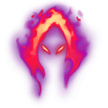
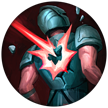

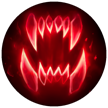

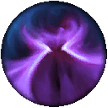
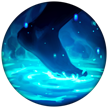
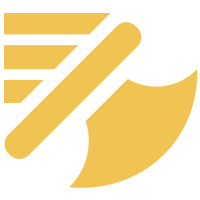
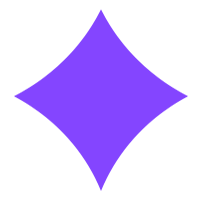






 Some abbreviations I use in this guide:
Some abbreviations I use in this guide:

















































































 Rock Surfing will make sure you'll get there faster, so you'll lose out on less gold and exp by recalling.
Rock Surfing will make sure you'll get there faster, so you'll lose out on less gold and exp by recalling. Rock Surfing active.
Rock Surfing active.

 Threaded Volley for poke/all-in or if you need to push really fast. For farming, use the Worked Ground.
Threaded Volley for poke/all-in or if you need to push really fast. For farming, use the Worked Ground. Threaded Volley.
Threaded Volley.

 Weaver's Wall if they stand close enough to the wall. Check out the combo section for a video example.
Weaver's Wall if they stand close enough to the wall. Check out the combo section for a video example. Seismic Shove instead of engaging with it.
Seismic Shove instead of engaging with it.  Unraveled Earth slows them a little and they will probably move away from your
Unraveled Earth slows them a little and they will probably move away from your  Threaded Volley, so it might be easier to predict their movement and successfully land
Threaded Volley, so it might be easier to predict their movement and successfully land  Seismic Shove.
Seismic Shove.

 Seismic Shove. This can deal a surprisingly high amount of burst damage and many enemies will disrespect it.
Seismic Shove. This can deal a surprisingly high amount of burst damage and many enemies will disrespect it.

 Weaver's Wall. And yes, doing so will trigger
Weaver's Wall. And yes, doing so will trigger  Unraveled Earth!
Unraveled Earth! Poppy's
Poppy's  Heroic Charge and
Heroic Charge and  Ornn's
Ornn's  Searing Charge are examples. Or even better:
Searing Charge are examples. Or even better:  Weaver's Wall to corner the enemy, followed by
Weaver's Wall to corner the enemy, followed by  Qiyana's
Qiyana's  Supreme Display of Talent is devasting!
Supreme Display of Talent is devasting!


































































































 Taliyah is strong early but weaker late. Early trades against a
Taliyah is strong early but weaker late. Early trades against a  Kassadin who is weaker early but becomes a late game monster, should be taken advantage of.
Kassadin who is weaker early but becomes a late game monster, should be taken advantage of. Electrocute you will be able to play a little more aggressive than when you take
Electrocute you will be able to play a little more aggressive than when you take  Dark Harvest because of its strength in the early to midgame.
Dark Harvest because of its strength in the early to midgame.























































 204,184
204,184
 43
43
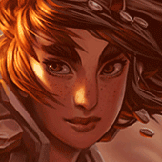





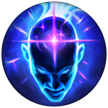
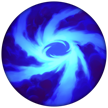
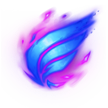
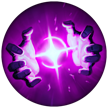




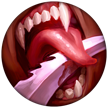

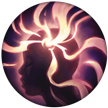
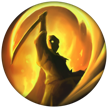
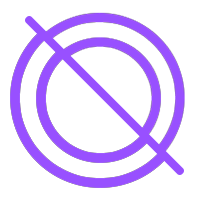

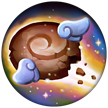
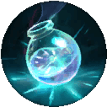
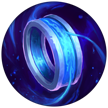






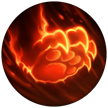









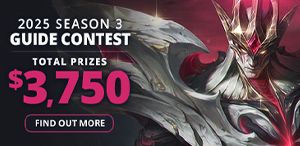

You must be logged in to comment. Please login or register.